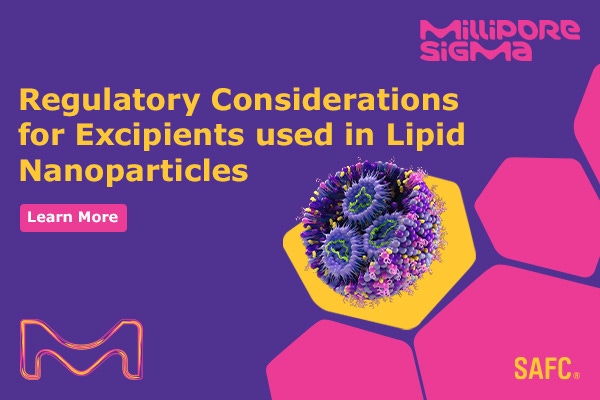Voices of Biotech
Podcast: MilliporeSigma says education vital to creating unbreakable chain for sustainability
MilliporeSigma discusses the importance of people, education, and the benefits of embracing discomfort to bolster sustainability efforts.
June 9, 2022

Sponsored Content
Lipid excipients and delivery systems such as lipid nanoparticles (LNPs) are essential for a wide variety of therapeutics including chemotherapy, analgesics, gene therapy, respiratory and ocular applications, anti-fungal applications, and vaccines. In many cases, these excipients and delivery systems play an important role in achieving the desired bioavailability. mRNA vaccines, for example, require incorporation of lipids to prevent degradation of the nucleic acid and facilitate cellular uptake of the mRNA which is required for antibody generation.
The purity and safety of novel, synthetic lipid excipients must be demonstrated due to their central role in the function of the drug product, distinct physicochemical properties, and the potential for interaction with other ingredients or the physicochemical environment. These excipients must comply with challenging and complex regulatory requirements, similar to those expected of the active pharmaceutical ingredient itself.
This white paper provides an overview of the regulatory classification of lipid nanoparticles, liposomes and novel excipients. Specific requirements outlined in guidance documents are shared along with strategies to stay ahead of emerging regulatory challenges.
You May Also Like